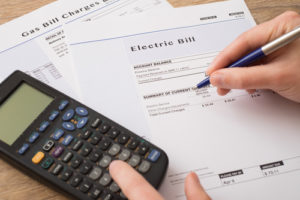Automating your financial life is a super smart money move. If you struggle to consistently put money away for saving or investing, automation is your best bet to get off the ‘one step forward, two steps back’ savings merry go round.
In fact, automating your money transfers puts you ahead of 95% of the population…Now that is something worth doing, right?
Setting up your automated financial system does require a few hours and some strategic thinking upfront. But once you’ve done the work, your finances are set to almost autopilot. From that point on savings get saved or invested, bills get paid and investments grow automatically, with just a little work here and there to keep things humming along.
Ready to automate? Let’s get started.
Setting up your bank account structure
 Getting your automated system working smoothly means setting up a few additional accounts in addition to your main transaction account. I’d also advise you to open up a debit card account instead of using credit cards for automatic payments.
Getting your automated system working smoothly means setting up a few additional accounts in addition to your main transaction account. I’d also advise you to open up a debit card account instead of using credit cards for automatic payments.
Account #1 Main Transaction / Discretionary Spending account –
This is your regular account where your pay is deposited. Your discretionary spending money stays in this account and is transferred once a week to your debit card account, automatically.
Account #2 Planned Future Expenses Account –
This account is for those things that you want to save for throughout the year, like travel, car repairs, major medical expenses, and Christmas costs.
Account #3 Bills Account –
Your recurring expenses will be paid from this account.
Account #4 Debit Card –
This is for your everyday expenses. This is the account that you will use with ATM access, the rest will not have ATM access. I recommend you top this one up each week, that way if the money runs our on day five, you only have to wait a couple of days for it to be replenished. Do that a few times and I guarantee you will change your habits.
Account #5 Investment Account –
Your investment funds will be transferred here, so do your homework on the best account to open. This money should be difficult, though not impossible, to get hold of.
You are likely to have a number of accounts in this category as it can also include your emergency buffer account and your investment accounts.
Ok. Now you’ve got your accounts set up, let’s start by automating your recurring expenses.
Automating your recurring expenses
I don’t know about you, but the filing system called ‘my mind’ isn’t always reliable when it comes to remembering due dates for a bunch of different bills.
Things can even slip through the cracks when I write them down. Automating the payment of your recurring bills is a smart way to avoid overdue fees and money plan blowouts due to forgotten expenses.
 You’re probably already making direct funds transfer online or calling up with a card payment each time the bill is due. It’s just a matter of automating this process.
You’re probably already making direct funds transfer online or calling up with a card payment each time the bill is due. It’s just a matter of automating this process.
Instead, set up automatic payments from your Bills account for all those regular costs such as electricity, water, rates, insurance, etc. When you automate your money transfers, you will be accumulating monthly money to cover these expenses…
It’s called having a plan for your money, pretty cool heh!
It’s ideal to automate the transfer within 48 hours of being paid to your bills account. Although the bills may not be paid straight away, the money has been moved out of your main account which eliminates the temptation to spend it!
It’s also a good idea to deposit a cushion of cash into your expense account to start with. This will cover any regular expenses that may fluctuate on a monthly basis.
Getting your expenses set up is the most time-consuming part of the automation equation, so now that’s done (phew!) pat yourself on the back, and let’s move on to savings.
Automating your planned future expenses
The planned future expenses account you set up is to help you save for little things, big things and any surprises life may throw your way.
As I mentioned above, this is where you put some money away each month for travel, repairs, Christmas, birthday presents, or whatever it is you want.
It’s a lot easier to manage these costs when you are putting something away each pay period.
Automating your investments
Some people can’t wait to plow any spare cash they have into their investments. They make it a priority.
For others, it just won’t happen unless they ‘force’ themselves to do it. In this case, automation is a game-changing strategy.
 You’re going to have a few accounts in this category as you grow your wealth.
You’re going to have a few accounts in this category as you grow your wealth.
The first will be your emergency fund.
Then you will have an account where your surplus will be transferred before being allocated to investment accounts.
Once the money hits the investment accounts, there will be decisions to make. You can further automate from here for certain types of investments, but for now, I will save that for another day.
Conclusion
As I mentioned at the start, if you make the effort to set up this automation, you will instantly dissolve money stress and set yourself up for a secure financial future. It’s my guarantee of success with money.
I’m losing count of the number of people who I have helped implement the money planner and automation into their life that have subsequently told me how great it works for them.
If you want to explore this further, claim your no-cost Smart Investor call using this link and schedule a chat with me.
Let me know in the comments below if you are going to take the leap and automate. I’m excited for you to get it done!

Awesome Vanessa, let us know how you get on.
I have been thinking about doing this for so long – I always delete all the marketing emails that come into my email account except yours meaning to read them later which I never seem to get back around to but this one I did and right here right now I am going to do this !